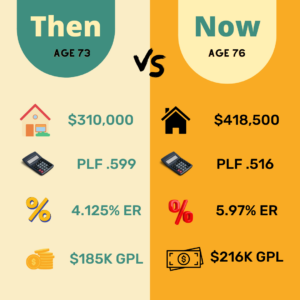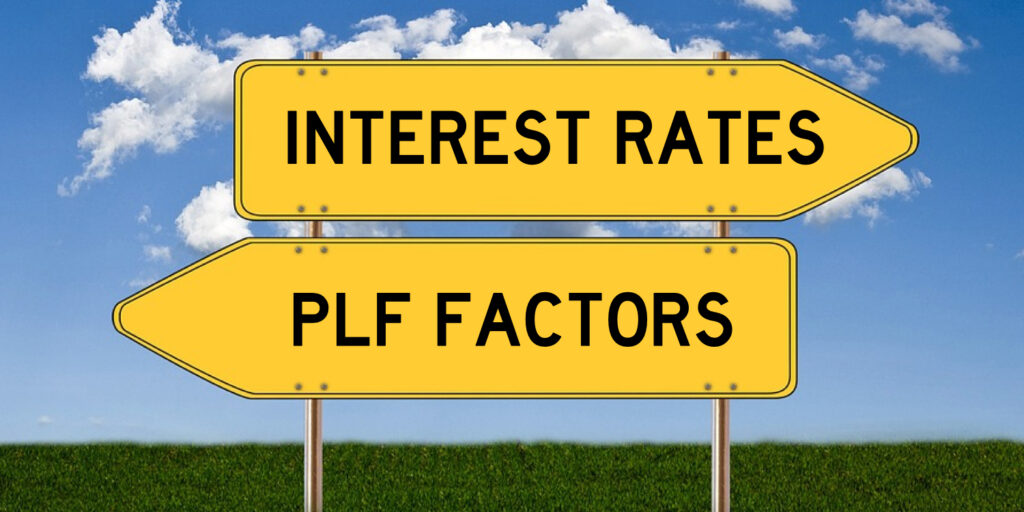HECM opportunities remain despite higher interest rates
What the Fed says
Last Friday Federal Reserve Chair Jerome Powell issued a clear-cut warning. The Fed’s efforts to curb inflation will bring more pain to Americans with job losses and a weakening economy. “These are the unfortunate costs of reducing inflation,” said Powell at an annual economic symposium in Jackson Hole, Wyoming. “But a failure to restore price stability would mean far greater pain.”
Simply put, expect more rate hikes until inflation begins to trend toward the Fed’s target of 2% annual inflation.
However, one asset class is unlikely to inflate in value -housing. With home prices up on average by 42% since the Covid-19 pandemic hit and mortgage rates nearly double what they were just one year ago more homebuyers are sitting on the sidelines. This is placing significant downward pressure on home prices resulting in home sellers reducing their asking prices across most markets.
A mountain of equity
Despite these market pressures homeowners over the age of 62 are currently holding an estimated $11.12 trillion dollars in home equity. That number will drop as the real estate market continues to reset throughout this year and into 2023.
Don’t let higher rates slow your sales activity
Yet despite rising expected rates on HECM loans, millions of homeowners could potentially qualify for a reverse mortgage. In fact, surging home values have mitigated what recent interest rates have taken way with decreased principal limit factors used to determine a HECM’s gross loan proceeds (or the maximum loan proceeds available before lien payoffs and closing costs). In other words, the door to the new HECM business is far from closed. It’s open!
Higher interest rates vs current home values. Who wins?
 Here’s one example.
Here’s one example.
Ruth was 73 years old in July 2019 when her home was worth about $310,000. At that time her expected rate would have been 4.125% giving her a gross principal limit (GPL) of $185,690. Fast forward to today and Ruth is three years older and facing a much-higher expected interest rate of 5.87%. Is all hope lost? Far from it. While her PLF (principal limit factor) has dropped from .599 to .516 (a 14% reduction) her home value grew by 35% making her estimated home value $418,500. Consequently, regardless of today’s higher interest rates her gross principal limit grew from $185,690 in 2019 to $215,946. While Ruth did put off getting a reverse mortgage until three years later, she had the good fortune of pursuing the loan after a record surge in home values. This formula works even for homes that only appreciated 21% (versus the national average of 42%) during the same time period.
In a more typical market, her home would have only appreciated three percent each year, and she would have netted $10,000 less potentially disqualifying her if the loan’s gross benefit wasn’t sufficient to pay off an existing mortgage. However, her home appreciated an average of 13% a year which gave her a buffer against rapidly-rising rates.
The bottom line is, that many of those who said no to a reverse mortgage before the pandemic may still qualify today thanks to a historic run-up in home values. Consequently, reverse mortgage originators may find abundant opportunities to engage qualified older homeowners for a reverse mortgage before a decline in home values no longer offsets higher interest rates.
Prospect HECM candidates
Learn how to prospect potential borrowers and previous contacts in our industry-leading CRM Sales Engine.







6 Comments
Thanks for this excellent information Shannon.
Forgot to mention that the borrower we discussed a moment ago was also named Ruth
Thank you for your call, David. How fortuitous. There’s much opportunity today despite much higher rates.
Great article. I always appreciate your content.
Eric, thank you kindly, sir!
Great perspective, backed with numbers and statistics.
Thanks Shannon!